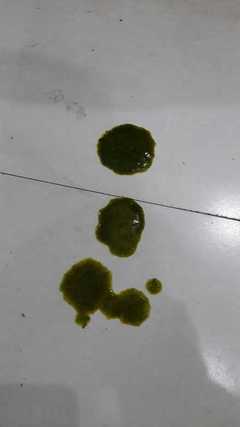
Your body has a sophisticated language for communicating its health, and vaginal discharge is one of its most honest messengers. While its consistency and amount can change throughout your cycle due to normal hormonal fluctuations, a sudden, persistent shift in color is a specific, high-priority alert from your internal ecosystem.
Unusual discharge color indicates you’ve been exposed to… an imbalance or infection that has disrupted your vaginal microbiome, and your body is showing you the first visible evidence of the battle underway.
It’s crucial to remember that this is not a sign of poor hygiene. It is a sign of a biological shift. Let’s decode what these colors are trying to tell you.
The Color Code: Deciphering the Message
1. Green or Greenish-Yellow: The “Red Flag” Green Light
This is one of the most distinct and concerning colors. It is rarely, if ever, considered normal.
- What it likely indicates: This color is classically associated with Trichomoniasis, a common, treatable sexually transmitted infection (STI) caused by a parasite. The discharge is often frothy, copious, and may have a foul odor. It can also sometimes be a sign of another STI like Gonorrhea or Chlamydia, especially if accompanied by pelvic pain or bleeding between periods.
- The Bottom Line: A greenish discharge is a non-negotiable signal to see a healthcare provider for STI testing. It indicates the presence of an infection that requires prescription medication.
2. Gray or Grayish-White: The “Fishy” Telltale
A thin, milky gray discharge, especially one with a strong, unmistakable fishy odor that becomes more pronounced after sex or during your period, is a very specific clue.
- What it likely indicates: This is the hallmark sign of Bacterial Vaginosis (BV). BV is not an STI, but an imbalance of the natural bacteria in the vagina. The “good” bacteria (lactobacilli) are outnumbered by other bacteria, leading to this characteristic gray color and odor.
- The Bottom Line: While not always sexually transmitted, BV requires medical attention. A doctor can confirm the diagnosis and prescribe antibiotics (either oral or a gel) to rebalance your vaginal flora.
3. Bright or Dark Yellow: The “Proceed with Caution” Yellow
A very light, pale yellow can sometimes be normal, especially when it dries on underwear. However, a bright or dark yellow is a different story.
- What it likely indicates: This can be a sign of an infection. It could be Trichomoniasis (often more greenish-yellow) or a Bacterial Infection. If it’s thick and clumpy (like cottage cheese), it could be a Yeast Infection, though these are more commonly white.
- The Bottom Line: A persistent, bright yellow discharge warrants a doctor’s visit to determine the exact cause and get the right treatment, as the remedies for a yeast infection, BV, and trichomoniasis are all different.
4. Pink or Brown: The “Spotting” Signal
A pink or brown discharge is essentially old or fresh blood mixing with your normal discharge.
- What it likely indicates:
- Normal: At the very beginning or end of your period (spotting).
- Potential Concern: If it occurs consistently between periods, it can be a sign of ** hormonal imbalance**, *cervical irritation* (from a vigorous pap smear or sex), or in some cases, something more significant like cervical polyps.
- Important: If you are post-menopausal and experience any bleeding or brown discharge, it is essential to see your doctor promptly.
- The Bottom Line: Occasional mid-cycle spotting can be normal for some, but persistent or new pink/brown discharge should be evaluated.
Your Action Plan: What to Do Next
- Do Not Douche: Douching will only disrupt your natural flora further, push bacteria upward, and mask symptoms, making it harder for a doctor to diagnose the problem.
- Schedule a Doctor’s Appointment: This is the most important step. Be prepared to describe the color, consistency, odor, and timing of the discharge. There is no need for embarrassment; this is a routine issue they address daily.
- Get Tested: Your provider will likely perform a simple and painless pelvic exam and take a swab of the discharge to test for specific infections like BV, Yeast, and Trichomoniasis. They may also recommend a full STI panel.
- Complete the Entire Course of Medication: If you are prescribed antibiotics or another treatment, finish the entire course, even if symptoms disappear, to ensure the infection is completely gone.
An unusual discharge color is your body’s built-in early warning system. It is a powerful, visual signal that the delicate environment of your vagina has been disrupted. By listening to this message and seeking professional care, you are not just treating a symptom—you are honoring your body’s wisdom and taking a crucial step to protect your long-term reproductive and overall health. When in doubt, always get it checked out.